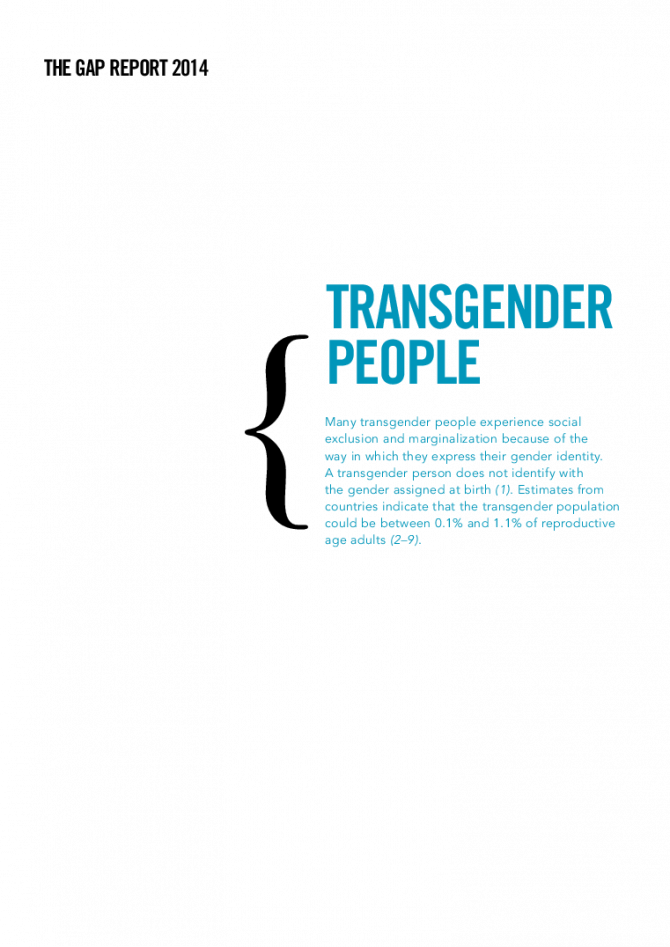Documents
Transgender people
16 October 2014
Many transgender people experience social exclusion and marginalization because of the way in which they express their gender identity. A transgender person does not identify with the gender assigned at birth. Estimates from countries indicate that the transgender population could be between 0.1% and 1.1% of reproductive age adults.

